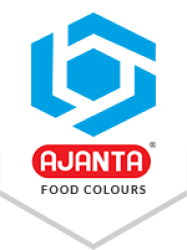_1729231708.jpg)
In the manufacturing industry colours play a crucial role in providing an appealing and attractive look to the products but often manufacturers face some challenges in the differentiation of lake colours and pigments, thinking about which one is suitable for their products such as food, cosmetics, and pharmaceuticals. A better understanding of colours can help them in choosing the right colour for their products which further helps them in product sales and brand recognition. In this article, we gonna talk and explore the differences between lake colours and pigments.
What Are Lake Colours?
Lake colours or lake pigments are prepared by a process in which FD&C dyes are mixed in insoluble substances like aluminum, calcium, or barium salts. This process transforms these FD&C dyes into lake pigments which makes them suitable for a range of products that contain fats, oils, or dry ingredients and other applications that need minimum colour bleeding. The insoluble substance used in the process changes the type of lake colour. By combining FD&C dyes with the aluminum substance we get an aluminum lake colour, a brilliant blue colour that is used in a wide range of food, cosmetics, and pharmaceutical products.
Key Characteristics of Lake Colours
Water-Insolubility: Lake colours are insoluble in water which makes them the best option for products that have oil, or fat bases. This insolubility of lake colour also makes it suitable for products that have multiple colours or layers because lake colours do not bleed on products.
Oil Dispersibility: Because of its good dispersion on oil and fats, it is the perfect option for a wide range of products such as lipstick, chocolate, foundations, blushes, and coated tablets.
Heat Stability: Lake colours stand in higher temperatures making them an ideal choice for baked goods and other products that require good stability to products during manufacturing and storage of products.
Usage in Food and Pharma: Lake colours are used in a wide range of products around the world but it is mostly used in food and pharmaceutical products. In food products lake colours are used in confectionery, baked items, and dairy products. In pharmaceuticals lake colours are commonly used for coating tablets and pills to give them vibrant and long-lasting colouring.
What Are Pigments?
Pigments on the other hand are more finely ground and insoluble particles that are used to import colours into different types of materials by physical mixing rather than dissolving. Pigments can be organic or inorganic depending on their extraction or preparation process. The FDA banned the use of organic pigments in some products because it found some toxic and harmful materials in natural pigments that were extremely unsafe. Pigments are used in some food products as well as non-food products such as paints, coatings, plastics, inks, soaps, bathing crystals, liquid soaps, bath fizzes, and some cosmetic applications.
Key Characteristics of Pigments
Particle-Based Colouring: Pigments do not dissolve but they are suspended on the mediums that provide opacity and rich colour to products.
Broad Colour Range: Pigments have come in a wide range of hues like bright and vibrant synthetic colours or earth tones which are found naturally which makes pigment suitable for making differentiable products.
Heat and Light Resistance: Pigments especially inorganic pigments are highly resistant to environmental factors such as UV radiation and high temperatures.
Use in Non-Food Applications: Pigments are generally used in non-food products like cosmetics, personal care, home care, coatings, and some other non-consumable items.
Choosing the Right Colour for Your Product
Manufacturers can choose the right colour for their products by only seeing some factors including the type of products, which type of shade they want, the environmental condition of colours, and whether colours fulfill all the governmental guidelines or not. Here are some points that further help you to understand it more clearly.
Define the Product Type: First, determine whether your product is edible or non-edible. In the case of sugar-based candies, fat-based beverages or some baked items, lake colours are the best choice. In contrast, lipsticks, eyeliners, oil-based soaps and similar other products are manufactured using core pigments.
Determine the Colour Effect: If brightly coloured food or beverage items are the target, then lake colours give the best results. For cosmetics, paints or plastics, metallic pigments work well as strength is required for opacity and depth.
Check Regulatory Standards: Ensure that the colours you choose for use in your products comply with regulatory requirements applicable to your product category or not. For instance, lake colours are allowed to be used in foods, beverages and also drugs.
Consider Environmental Stability: If your products are subject to heat or light, they should instead incorporate inorganic pigments as these allow greater stability and consistency. But on the other hand, in the case where gradual colour release is needed, or in low moisture areas, stability is provided by lake colours.
Conclusion
By exploring and understanding the difference between lake colours and pigments, manufacturers can choose the right colour for their products. Whether you are looking to add an appealing and vibrant colour to your confectioneries and drinks items, or want to achieve opacity in your cosmetics, and personal care products selecting the right colour for products can help to achieve your goal. Always remember that the colours you are using in products must fulfill all the regulatory standards which can help you in creating a brand image for products so people start trusting on your products which can be the reason for product sales and brand recognition.




